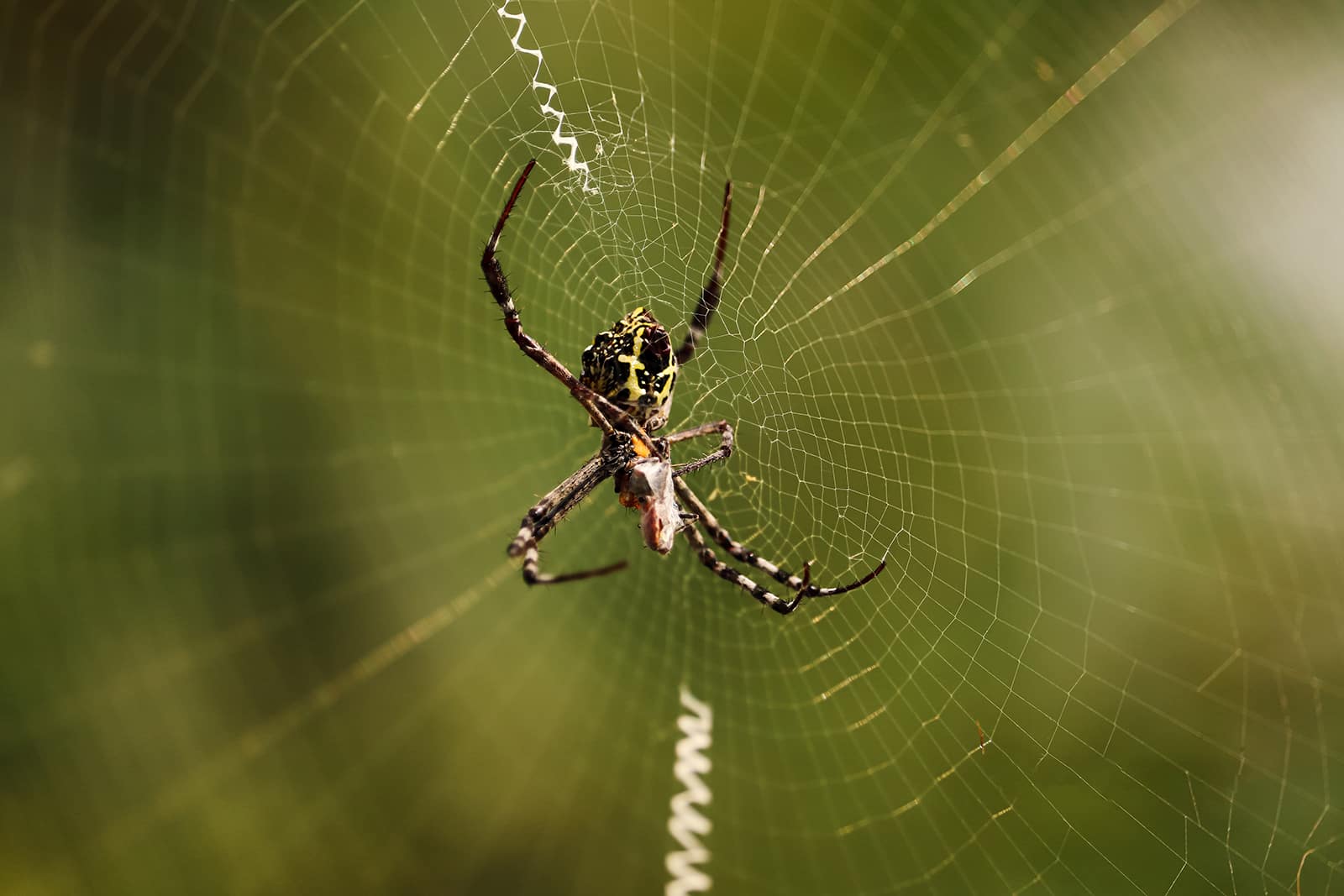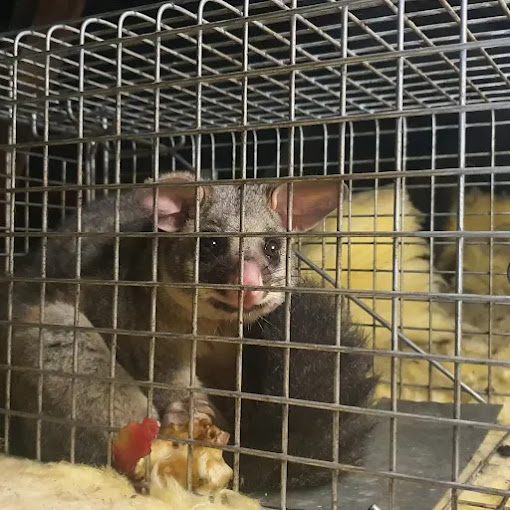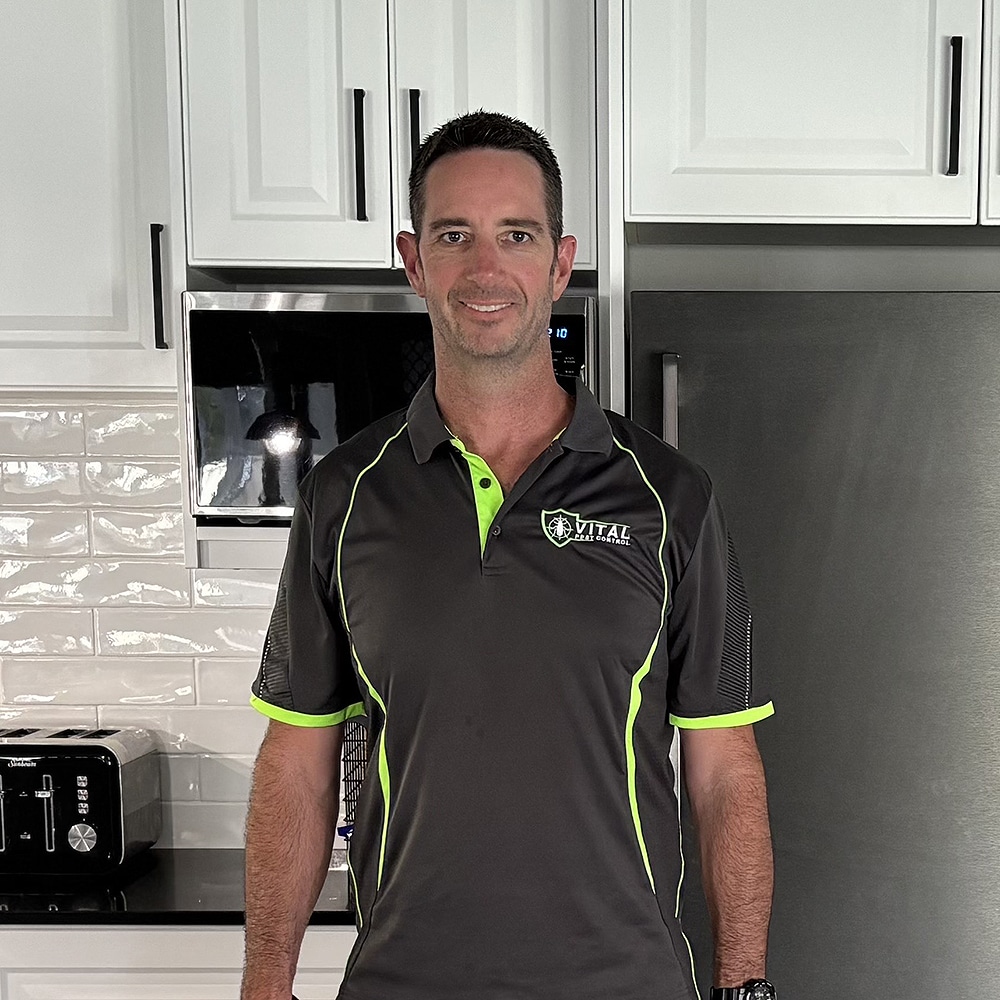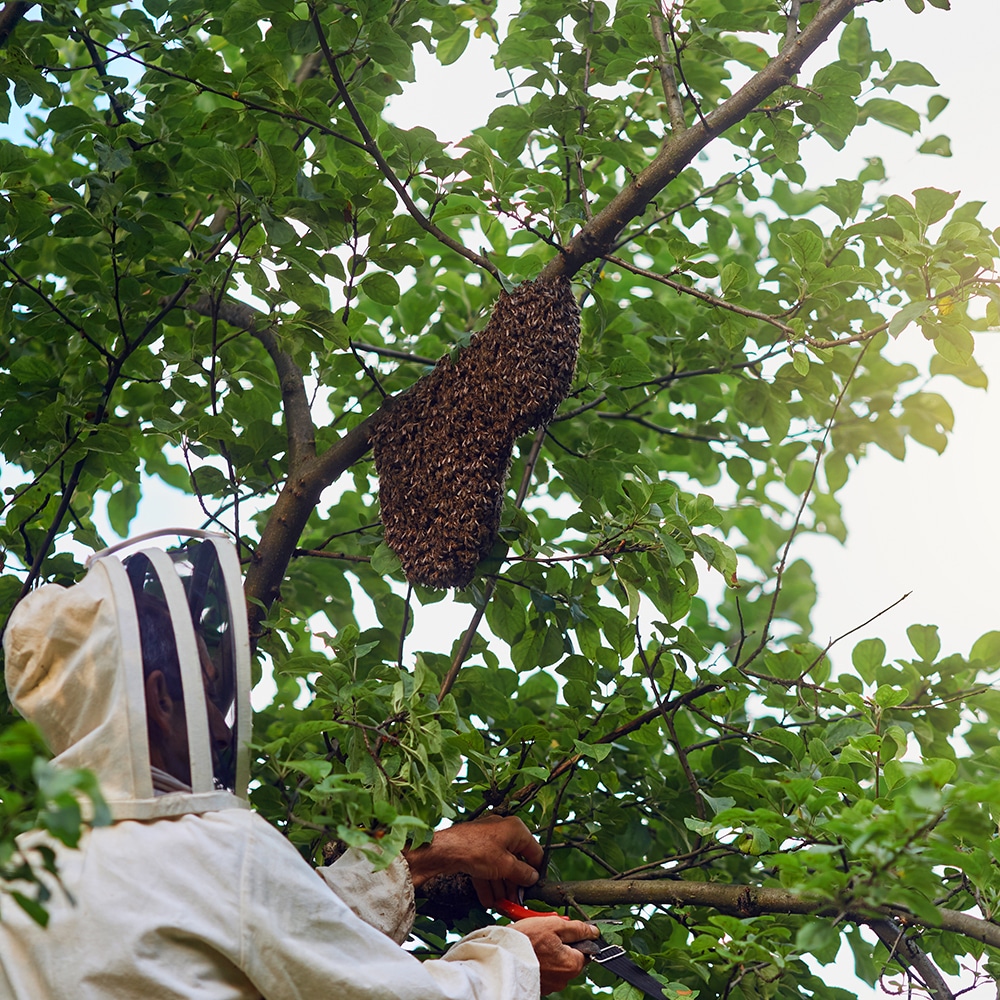
Why Do Spiders Come Back And Why
Why Do Spiders Come Back And Why On The Central Coast NSW. Responsive Proactive Solutions. Detail-focused for lasting results. Call Adam on 0431 222 894
Discover how to humanely trap and relocate a possum with our guide. At Vital Pest Control, we provide reliable and trustworthy advice for Central Coast NSW residents.
Are possums protected in Australia?
Yes, possums are protected under the National Parks and Wildlife Act. You must follow guidelines to ensure their safety. Trapping and relocating without permission is illegal and can harm possums.
What are the legal requirements for possum relocation?
Relocation requires a licence from the NSW National Parks and Wildlife Service. This ensures the humane treatment of possums. Always check local regulations to avoid penalties.
How to identify a possum infestation
Look for signs like noises at night, droppings, and damage to roof insulation. Also, check for urine stains and tracks. Identifying these early helps in humane trapping.
Best humane possum trapping methods
Use a cage trap with smooth edges to prevent injury. Ensure the trap is large enough for the possum’s comfort. Set traps along possum paths for effectiveness.
What food to use as possum bait
Use fruits like apples or bananas as bait. These are appealing to possums and safe for consumption. Using the right bait increases trapping success.
How to set up a possum trap correctly
Place the trap in a shaded area with some bait inside. Make sure it’s stable and won’t tip over. Position it where possums frequently travel.
How often should you check a possum trap?
Check traps every morning to ensure the possum is not stressed. Frequent checks help maintain the possum’s well-being. Release them promptly once caught.
Where can you legally relocate a possum?
Relocate possums within 150 metres of capture. This is crucial as they have established territories. Always follow local rules for relocation.
Discover how we can help you today! Visit our Contact page for more information and solutions tailored to your needs.

In Australia, possums are a valued part of the ecosystem and are protected under the National Parks and Wildlife Act 1974. This legislation makes it illegal to harm, capture, or relocate possums without a proper licence. For residents of Central Coast NSW dealing with possums, it’s crucial to understand these protections to ensure compliance with the law while addressing any pest control concerns.
Legal Requirements for Possum Management
Handling possums in Australia requires adherence to strict legal guidelines. If you encounter a possum problem, contacting a licensed pest control professional is advisable. These experts possess the necessary permits to manage possums humanely. They can also provide advice on exclusion techniques to prevent possums from entering homes. Attempting to trap or relocate a possum without a licence can result in hefty fines and legal repercussions.
Humane Solutions for Possum Issues
For those in Central Coast NSW, humane solutions are available to manage possum intrusions. Blocking access points to roofs and gardens, using deterrents like lights or noise, and employing natural repellents can discourage possums from settling in residential areas. Such measures align with the legal protections that safeguard these native mammals while addressing the concerns of property owners.
Possum relocation is a sensitive task requiring compliance with legal requirements, especially on the Central Coast of NSW. Understanding these regulations is crucial for Vital Pest Control to ensure humane and legal practices. This process not only protects the possums but also aligns with environmental laws.
Obtaining a Licence
In NSW, a licence is essential for relocating possums. The National Parks and Wildlife Service mandates this to control the relocation process. Possum handlers must be familiar with licensing guidelines to ensure ethical treatment and compliance with state laws.
Approved Release Locations
Possums must be released within a 50-metre radius of their capture site. This regulation aims to maintain their territorial instincts and reduce stress. Relocating them too far can disrupt local ecosystems and increase mortality rates. Vital Pest Control ensures adherence to these location requirements.
Proper Handling Techniques
Handling possums requires care and expertise. Possum handlers should be trained in using humane traps and methods to minimise harm. Proper handling during capture and release is vital for the animal’s well-being and legal compliance. Training ensures that possums are not subjected to unnecessary distress.
By following these legal requirements, Vital Pest Control can effectively manage possum relocation while upholding animal welfare and legal standards on the Central Coast.
Living on the Central Coast NSW comes with its unique set of wildlife challenges. One such challenge is dealing with possums. Identifying a possum infestation early can help you take humane action before the issue escalates. Here are some signs to look for if you suspect possums are calling your property home.
Unusual Noises at Night
If you hear scratching, thumping, or scampering in your roof or walls during the night, possums might be the culprits. These nocturnal animals are active at night, making their presence known with loud noises as they move about searching for food or nesting.
Disappearing Garden Plants
Possums love munching on garden plants. If you notice missing or damaged foliage, or fruit disappearing overnight, these marsupials might be enjoying a midnight feast in your garden. Check for half-eaten fruit or stripped branches as telltale signs.
Possum Droppings
Possum droppings are another indicator. They resemble those of small dogs and can often be found on decks, in gardens, or near entry points to your roof. Regularly finding these droppings could point to an infestation.
Strong Odour
A strong, musky smell in or around your home might indicate a possum has taken up residence. This odour comes from their droppings and urine, which can accumulate over time if a possum is living in your roof space.
Addressing a possum infestation humanely is crucial. If you suspect possums have moved in, contacting a professional like Vital Pest Control can ensure their safe relocation.
Possum presence on the Central Coast of NSW can lead to garden havoc and roof disturbances. Understanding humane trapping methods ensures their safe relocation and keeps local wildlife protected. This approach respects both the creatures and the environment while addressing pest concerns effectively.
Choosing the Right Trap
Selecting a suitable trap is crucial for humane possum capture. Cage traps with smooth edges prevent injury, allowing possums to remain calm. Ensure the trap size accommodates possums comfortably, providing enough room for movement. This helps minimise stress and physical harm during the capture.
Baiting Techniques
Baiting effectively involves using food items that possums find irresistible. Fruits like apples or bananas work well, drawing possums into the trap. Place the bait strategically to encourage full entry, ensuring the trap door closes securely behind them. Regularly check and refresh bait to maintain attraction.
Monitoring and Timing
Monitor traps frequently to avoid prolonged confinement. Early morning checks allow for prompt relocation, aligning with possums’ nocturnal habits. Timely checks prevent undue stress and ensure their well-being. Compliance with local wildlife regulations requires that traps are monitored consistently.
Relocation Guidelines
Relocating possums humanely involves releasing them in suitable habitats. Choose areas with ample food sources and shelter, ensuring their survival post-release. Follow legal requirements for relocation distances to support their adaptation. Proper planning and execution ensure possums thrive in their new environment.
Possums can be a common nuisance, especially on the Central Coast NSW. To manage them humanely, selecting the right bait is crucial. With the right lure, you can effectively and safely trap a possum for relocation. Here are some food items that work well as possum bait.
Fruits and Vegetables
Possums have a sweet tooth and are attracted to fruits. Apples, bananas, and grapes make excellent bait. Chop them into small pieces to release their scent. Vegetables like carrots and sweet potatoes also appeal to possums. Their natural sugars can lure possums into traps effectively.
Pet Food
Cat or dog food can be an enticing option. The strong smell of canned pet food can draw possums in from a distance. Ensure you place it securely in the trap to avoid it being taken without triggering the mechanism. Dry pet food can work too but is generally less effective than wet options.
Bread and Grains
Bread and grains, especially those with sweet additives like honey, are irresistible to possums. Spread a thin layer of honey or peanut butter on bread slices to enhance effectiveness. This combination can be particularly effective, as it combines scent and flavour to attract possums.
Setting up a possum trap correctly is crucial for humane trapping and relocation. On the Central Coast NSW, ensuring that you follow guidelines is not only ethical but also necessary to comply with local regulations. Proper setup can make the process smoother, ensuring the safety of both the animal and yourself.
Choosing the Right Trap
Select a trap specifically designed for possums. These traps are often cage-style, providing enough room for the possum to move without harm. Ensure it is sturdy and in good condition to prevent escape or injury. Placing the trap in an area frequented by possums, such as near fruit trees or garden patches, increases the likelihood of success.
Setting the Bait
Bait plays a significant role in successfully trapping a possum. Use fresh fruits like apples or bananas, which are highly attractive to possums. Secure the bait at the rear of the trap, prompting the possum to fully enter before triggering the mechanism. This positioning helps ensure the door closes correctly behind the animal.
Placement and Monitoring
Position the trap on a flat, stable surface to prevent tipping. Check the trap frequently, ideally every few hours, to minimise stress for any captured possum. Nighttime is the most active period for possums, so setting the trap in the evening increases chances of capture. Always handle the trap with care to avoid alarming the trapped possum.
When it comes to possum trapping on the Central Coast of NSW, ensuring humane practices is key. Regularly checking your possum trap plays a significant role in this process. But just how often should you do it? Understanding the importance of frequent monitoring can make all the difference in effective and ethical pest control.
Legal Requirements and Guidelines
In NSW, there are specific regulations concerning possum trapping. You must check traps daily. This frequency is not only a legal requirement but ensures the wellbeing of the captured animal. Quick attention minimises stress, reducing the chance of harm to the possum. Always adhere to the guidelines to maintain humane standards and avoid penalties.
Impact in Possum Welfare
Frequent trap checks are crucial for the welfare of possums. Regular monitoring allows for timely relocation, ensuring possums don’t suffer from prolonged confinement. By checking traps at least once every 24 hours, you can make sure that any captured possum is released promptly, maintaining their health and reducing distress.
Practical Considerations
Besides legal and ethical reasons, practical considerations also play a role. Weather conditions and trap location might affect how often you can check. Ensure your traps are in accessible areas. A strategic approach to trap placement and monitoring can optimise your pest control efforts, ensuring humane treatment and effective results.
Relocating possums can be a delicate task, especially on the Central Coast of NSW. These native marsupials are protected under the National Parks and Wildlife Act 1974, making it crucial to understand the legalities involved. Before you proceed, ensure you follow all relevant guidelines to keep both the possum and yourself safe.
Understanding Local Regulations
In NSW, it is illegal to relocate possums more than 50 metres from where they were captured. This regulation ensures the possums stay within their familiar habitat, reducing the risk of stress or injury. You must obtain a license from the National Parks and Wildlife Service if you plan to relocate possums. Always check the latest local rules to avoid any legal issues.
Choosing the Right Spot
If relocation is necessary within the legal boundary, choose a spot that mimics their natural environment. Look for areas with plenty of trees and natural shelters. Ensure the area is away from busy roads to minimise potential dangers. The new location should provide enough food sources to meet the possum’s dietary needs.
Consider Professional Help
Relocating possums can be tricky, and professional pest control services can help ensure a humane and legal process. Vital Pest Control on the Central Coast NSW offers expert assistance in dealing with possum challenges, ensuring compliance with all legal requirements. Hiring professionals can save you time and provide peace of mind.
Relocating a possum can be tricky. Vital Pest Control on the Central Coast NSW needs to ensure that these animals are moved far enough to prevent their return, yet not so far that they struggle to survive. Understanding the right distance is crucial for humane and effective pest management.
The Importance of Distance
Possums have a strong homing instinct. They often try to return to their original location if relocated too close. Experts recommend moving them at least five kilometres away. This distance reduces the chance of them finding their way back. On the Central Coast, it’s important to choose areas where possums can find food and shelter easily.
Legal Considerations
In NSW, the law requires possums to be released within a certain distance from their capture site. This ensures their welfare and prevents disrupting local ecosystems. Make sure to check regulations before relocating. Authorities often have guidelines to help balance humane treatment with environmental protection.
Choosing the Right Location
When relocating possums, select locations with natural habitat features like trees and water sources. These provide necessary resources for their survival. Avoid urban areas to minimise conflicts with humans. A well-chosen spot ensures possums adapt smoothly to their new environment, supporting their long-term wellbeing.
Handling a trapped possum safely requires care and attention to ensure the well-being of both the animal and the handler. On the Central Coast in NSW, possums are a common sight, and knowing how to deal with them humanely is important. This guide provides practical steps to manage a trapped possum effectively.
Approaching the Trap
When approaching a trap, remain calm and quiet. Sudden movements or loud noises can distress the possum. Always wear gloves to protect yourself, as possums may bite or scratch if they feel threatened. Observe the possum’s behaviour from a safe distance before getting closer.
Securing the Possum
Once you’ve assessed the situation, cover the trap with a cloth or towel. This helps calm the possum by creating a dark, quiet environment. Ensure the cover is secure but not restricting airflow. This step makes the next part of the process smoother and safer.
Transporting the Possum
Transport the covered trap carefully to avoid jostling. Place it in a vehicle with stable, even temperature conditions. If possible, transport the possum in the early morning or late afternoon when it is cooler. Ensure the trap is secured to prevent movement during transit.
Releasing the Possum
Release the possum in a suitable location, ideally not far from where it was trapped. Make sure the area is safe and has ample food and shelter. Open the trap carefully, standing back to give the possum space to exit. Avoid direct contact, allowing the possum to leave at its own pace.
Possums can be charming creatures, but when they decide to make your home theirs, it can become a problem. Knowing when to call a professional for possum removal is crucial for ensuring the safety of both your family and the possum. On the Central Coast, NSW, Vital Pest Control offers expert assistance for these situations.
Unusual Noises at Night
If you hear scratching, thumping, or unusual noises coming from your ceiling or walls at night, it might be a possum. While these nocturnal visitors are often harmless, their activity can be disruptive. If the noise persists, it’s a sign to contact a professional. They have the tools and expertise to safely and humanely remove the possum without causing harm.
Damage to Property
Possums are known for their ability to squeeze through small spaces. This can lead to broken tiles, damaged insulation, or even chewed wiring. If you notice such damage, it’s best to call in the experts. They can assess the situation, repair the damage, and ensure the possum is relocated appropriately.
Health and Safety Concerns
Possums can carry diseases that pose health risks to humans. If you suspect a possum in your home, especially if you have pets or children, professional removal is recommended. Experts at Vital Pest Control are trained to handle these situations safely, reducing health risks and preventing future intrusions.
Possums are a common sight on the Central Coast, NSW, and while they are a vital part of the ecosystem, they can become a pest when they invade homes. After trapping and relocating a possum humanely, ensuring they don’t return is crucial for effective pest control. Here are some strategies to prevent possums from coming back.
Secure Entry Points
Possums are adept climbers and can find their way back if access points aren’t sealed. Inspect your home for any gaps or holes, particularly in the roof and eaves. Use sturdy materials like metal mesh to cover these areas, ensuring possums can’t gnaw their way back in. Regular maintenance of entry points is essential for long-term prevention.
Reduce Attractions
Possums are drawn to food sources, so minimizing attractants is vital. Secure rubbish bins with tight-fitting lids and avoid leaving pet food outside overnight. Trim overhanging branches that provide easy access to roofs. By reducing food and shelter opportunities, you make your property less appealing to returning possums.
Use Deterrents
Consider using natural deterrents to keep possums at bay. Spraying a solution of garlic and water around potential entry points or using commercial possum repellents can discourage them. Motion-activated lights or sprinklers can also create an uncomfortable environment, making possums think twice before returning.
Implementing these preventive measures will help maintain a possum-free home on the Central Coast, ensuring your wildlife management efforts are both humane and effective.
Discovering an injured possum in a trap can be distressing. It’s crucial to act quickly and responsibly to ensure the animal’s safety and wellbeing. Possums are a protected species in Australia, so handling the situation with care is essential. Here’s what you can do if you find an injured possum trapped on the Central Coast NSW.
Assess the Possum’s Condition
Approach the trapped possum quietly to avoid causing further stress. Observe its behaviour and any visible injuries. If the possum appears severely injured or in distress, minimise handling to prevent additional harm. Note any bleeding, limping, or signs of shock, as these details will help when seeking assistance.
Contact a Wildlife Rescue Organisation
Immediately reach out to a local wildlife rescue service. Organisations like WIRES or Central Coast Animal Rescue can provide guidance and aid in rescuing the injured possum. They possess the expertise and resources to handle wildlife emergencies safely. Provide them with details of the possum’s condition and location.
Provide Temporary Shelter
While waiting for rescue assistance, place the possum in a quiet, warm, and dark area to reduce stress. Cover the trap with a towel or blanket to create a calm environment. Avoid offering food or water as this could exacerbate its injuries. Your primary goal should be to keep the animal safe and comfortable until professional help arrives.
Possum trapping in urban areas on the Central Coast NSW requires a careful approach to ensure both humane treatment and effective relocation. With the right methods, you can safely capture these nocturnal creatures without harming them. Understanding local guidelines and employing best practices is crucial for success.
Choosing the Right Trap
Selecting an appropriate trap is the first step in humane possum trapping. Box traps are highly recommended as they are safe and minimise stress for the possum. Make sure the trap is large enough to comfortably accommodate the animal. Opt for traps that are easy to operate and check them regularly to avoid prolonged confinement of the possum.
Setting the Trap
Placement is key when setting traps in urban areas. Position the trap near possum activity, such as roof spaces or garden paths. Use fruit or vegetables as bait to attract the possum. Ensure the trap is stable and shielded from harsh weather conditions. Proper setting increases the likelihood of capturing the possum quickly and humanely.
Relocation and Release
Once captured, relocation should be done promptly. Check with local authorities about any specific regulations regarding possum relocation on the Central Coast NSW. Relocate the possum to a suitable habitat away from urban areas. Ensure the release site provides adequate food and shelter, reducing the chance of the possum returning or facing difficulties in its new environment.
Possum relocation on the Central Coast NSW requires careful attention to local council guidelines to ensure humane treatment and compliance with legal standards. Relocating possums can be tricky, as they are protected under Australian law. Understanding and adhering to the council’s rules is crucial for anyone attempting to move these nocturnal creatures.
Understanding Permits and Regulations
Before taking any action, it’s essential to check if a permit is needed. Many councils stipulate that only licensed specialists can handle possums. These regulations are in place to safeguard the animals and ensure humane practices. Engaging with a licensed pest control expert like Vital Pest Control can simplify this process, ensuring all legal requirements are met and the possum is treated with care.
Choosing the Right Time and Method
Timing plays a critical role in possum relocation. Councils often have specific guidelines about when possums can be moved, typically outside their breeding season. The method of trapping and relocating must also comply with humane standards. Using traps that minimise stress and injury is vital. Consulting with experts can help choose the right approach, adhering to both humane and legal standards.
Designating a Safe Relocation Site
Locating a suitable new habitat for the possum is another key aspect. Councils usually recommend relocating the possum no more than 50 metres from its capture site to avoid displacing it from its territory. This ensures the possum remains in a familiar environment, reducing stress and increasing survival chances. Following these guidelines is essential for ethical and effective relocation.
Please leave your details in the form and we will call you back the same day.
So that we can process your enquire efficiently please leave as many details as possible and upload any relevant images. (.jpg and .png format)

Why Do Spiders Come Back And Why On The Central Coast NSW. Responsive Proactive Solutions. Detail-focused for lasting results. Call Adam on 0431 222 894

Building a Long Term Residential Pest Protection Plan For Home Owners On The Central Coast NSW. Responsive Proactive Solutions. Detail-focused for lasting results. Call Adam on 0431 222 894

How to Protect Your Home from Wasp Infestations On The Central Coast NSW. Responsive Proactive Solutions. Detail-focused for lasting results. Call Adam on 0431 222 894